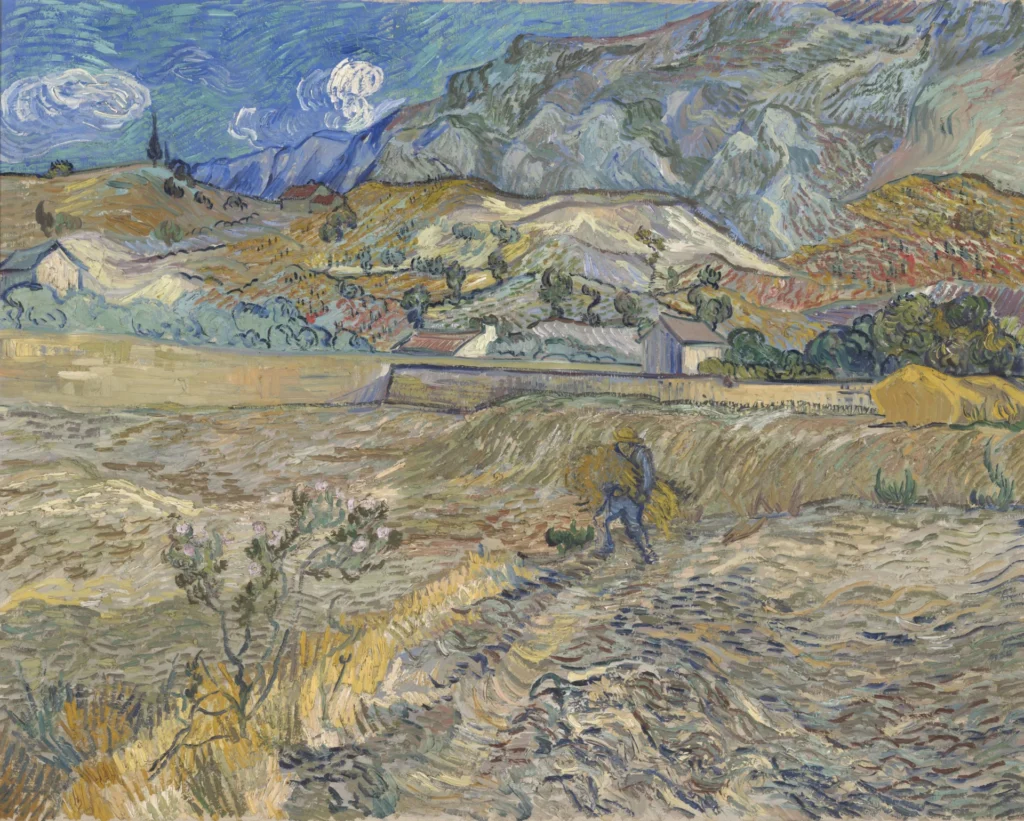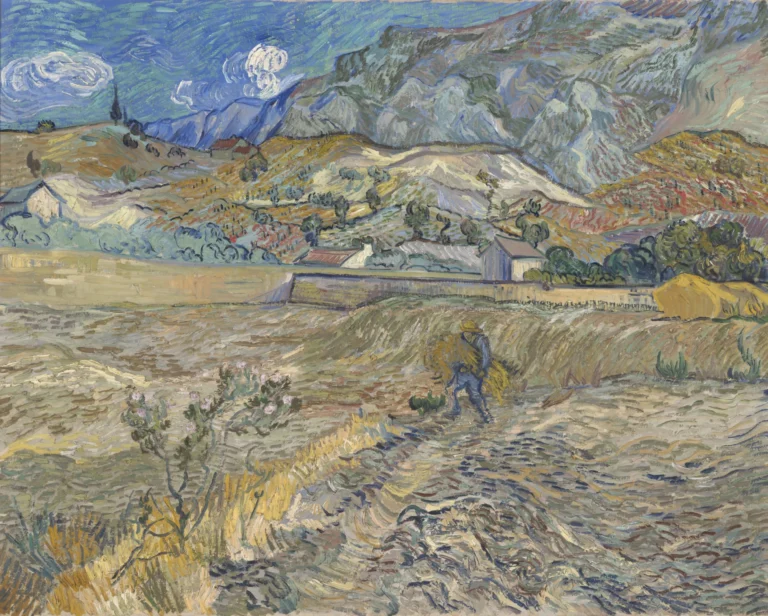Landscape At Saint-Rémy Enclosed Field With Peasant
Vincent van Gogh's Landscape at Saint-Rémy (Enclosed Field with Peasant) painted in October 1889, presents a vibrant depiction of a ploughed field near the asylum in Saint-Rémy-de-Provence. The scene features a lone peasant, lilac bushes, and the majestic Alpilles mountains in the backdrop, all rendered in Van Gogh's signature, energetic brush strokes. This piece marks a poignant point in Van Gogh's life, reflecting his recovery and spiritual connection to the landscape.
October 1889
About the Artwork
Created during one of the most tumultuous yet artistically prolific periods of his life, Landscape at Saint-Rémy symbolizes Vincent van Gogh's deep engagement with the world around him. While recovering from a nervous breakdown at the asylum in Saint-Rémy-de-Provence, Van Gogh found solace in nature, evident through his vibrant and expressive landscapes. This particular painting showcases a richly textured ploughed field, a hardworking peasant, and the distant Alpilles mountains, encapsulating a sense of tranquility amidst his inner struggles. It is a testament to his belief in the healing power of nature, serving as both an escape and an inspiration during a period of intense mental turmoil.
Did You Know
Van Gogh had a profound fear of the city and sought solace in nature. During his time in the asylum, he believed that by painting landscapes, he could express his spirituality and connect with the unyielding forces of nature, which offered him both peace and inspiration.
The figure of the peasant in the painting signifies the hardships of rural life and stands as a testament to Van Gogh’s admiration for the working class. His choice to depict a peasant carrying a bundle of straw illustrates his empathy and respect for the labor involved in cultivating the land.
This painting, seen as part of a series reflecting Van Gogh’s fascination with wheat fields, represents a pivotal moment in his artistic journey. It reflects his transition towards a deeper, more textured use of color and symbolizes his resilience and creative output during a period of personal crisis.










